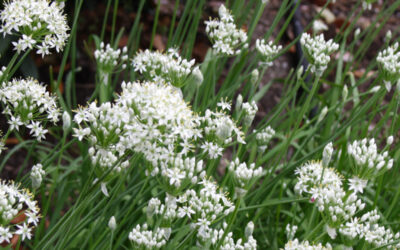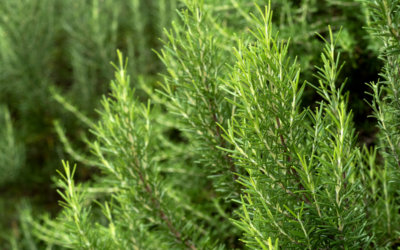Learning about herbs has been an interesting journey for me. Some, like parsley and oregano, were old friends, commonly used in my childhood home. But others like thyme were a surprising revelation to me. In the kitchen it has become one of my go-to herbs when working on a new recipe. In the garden – well I confess I could happily grow thyme almost everywhere. Its tidy habits and subtle aroma make it a sure winner.
All Kinds of Thyme
The thyme family is probably larger than you realize – over 350 species of thyme worldwide although most are from the Mediterranean region. All are small evergreen perennials with spikes of pink, purple, or white flowers. Here’s a rundown on the most popular varieties to grow at home.
Common or French Thyme (Thymus vulgaris) – This is the thyme of the traditional kitchen garden. Common thyme hybridizes easily so you’ll see interesting varieties come on the market every year. One attractive cultivar to include in hanging baskets is Silver Thyme (Thymus vulgaris ‘Argenteus’).

Wild or Creeping Thyme (Thymus praecox subsp. arcticus) – This is a low growing thyme also known as red creeping thyme. The tiny leaves have very little scent or flavor so it is mostly used as ground cover and not harvested. The flowers are purple to mauve. Wild thyme is happy in a wide variety of growing conditions and has naturalized in many parts of the U. S. Commonly sold cultivars include ‘Doone Valley,’ ‘Kew,’ and ‘Albus.’
Lemon Thyme (Thymus x citriodorus) – This is a spreading thyme reaching a foot tall with tiny egg-shaped leaves. Lemon thyme is one of the best for cooking, surpassing even common thyme in some opinions (including mine). It’s also one of the most beautiful and fragrant in the garden. Watch for variegated cultivars such as ‘Aureus’ (golden edged), ‘Golden King’ (mostly gold), and ‘Silver Queen’ (cream to light yellow edged).
Caraway Thyme (Thymus herba-barona) – The unusual species name refers to the use of caraway thyme to flavor a “baron of beef,” an old-style cut of two whole sirloins not entirely cut apart. This thyme grows 2-5 inches tall with bright pink flowers. Caraway thyme can take higher levels of humidity and rain than other thymes, making it a good candidate for Gulf Coast gardens. This creeping thyme can be used as a ground cover with heads of pink flowers and tiny linear leaves.

Growing and Propagating Thyme
Thyme is happiest with lots of sunshine and well-drained, almost gravelly, soil. If planted in a too-wet area the roots may rot. It needs regular watering during its first year but can withstand drought conditions once established.
Plant thyme in the front of your garden beds for a border that complements more showy ornamental plants. I also like to pair thyme with repeating ornamental bulbs, such as oxblood lilies and daffodils. The stalks will push through the thyme in early spring, flower, and die back before the thyme starts to take off in late spring. Then through the year you have a ground cover where the bulbs are lying dormant. This will help prevent you from accidentally digging up the bulbs, an important function for forgetful gardeners like me.
Thyme is a modest herb that spreads slowly. Regular pruning in spring and fall maintains the plant’s health as it reduces the amount of less productive old wood. Thyme plants with an excess of old wood are less likely to survive winter.
Harvesting and Storing
A sprig of thyme may be clipped any time of year to enjoy the fresh flavor. Harvest culinary thymes just before they bloom in early summer and a second time after Labor Day. You can safely clip about a half of the plant’s growth.
As the stems are short and the leaves small, you’ll need to give harvested branches a quick bath to dislodge dry leaves and other debris. Immerse them in a bucket of water and then pull out the branches a section at a time. Shake off excess water and allow to dry on the counter for a few hours. Then put them loosely into a large paper bag. Set the bag aside for a week to allow the leaves to dry. Once they’re dry and crackly, use your fingers to strip the leaves from the stems. Store whole leaves in an airtight container.

Thyme In the Kitchen and Beyond
Thyme is an herb deserving more use in the American kitchen. It gives a hearty flavor to soups, gravies, and meat sauces. It is a key ingredient in Bouquet Garni and Herbes de Provence, two traditional herb mixes of French cuisine. Try adding a teaspoon of fresh thyme to steamed cabbage. Lemon thyme is especially good when added to poultry dishes and herbal vinegars.
In our fast-paced world who doesn’t need more thyme? It’s easy to grow in the garden or containers. I love having some thyme planted near my kitchen door for quick additions to dinner. Grow some at your home today.













Love, love this